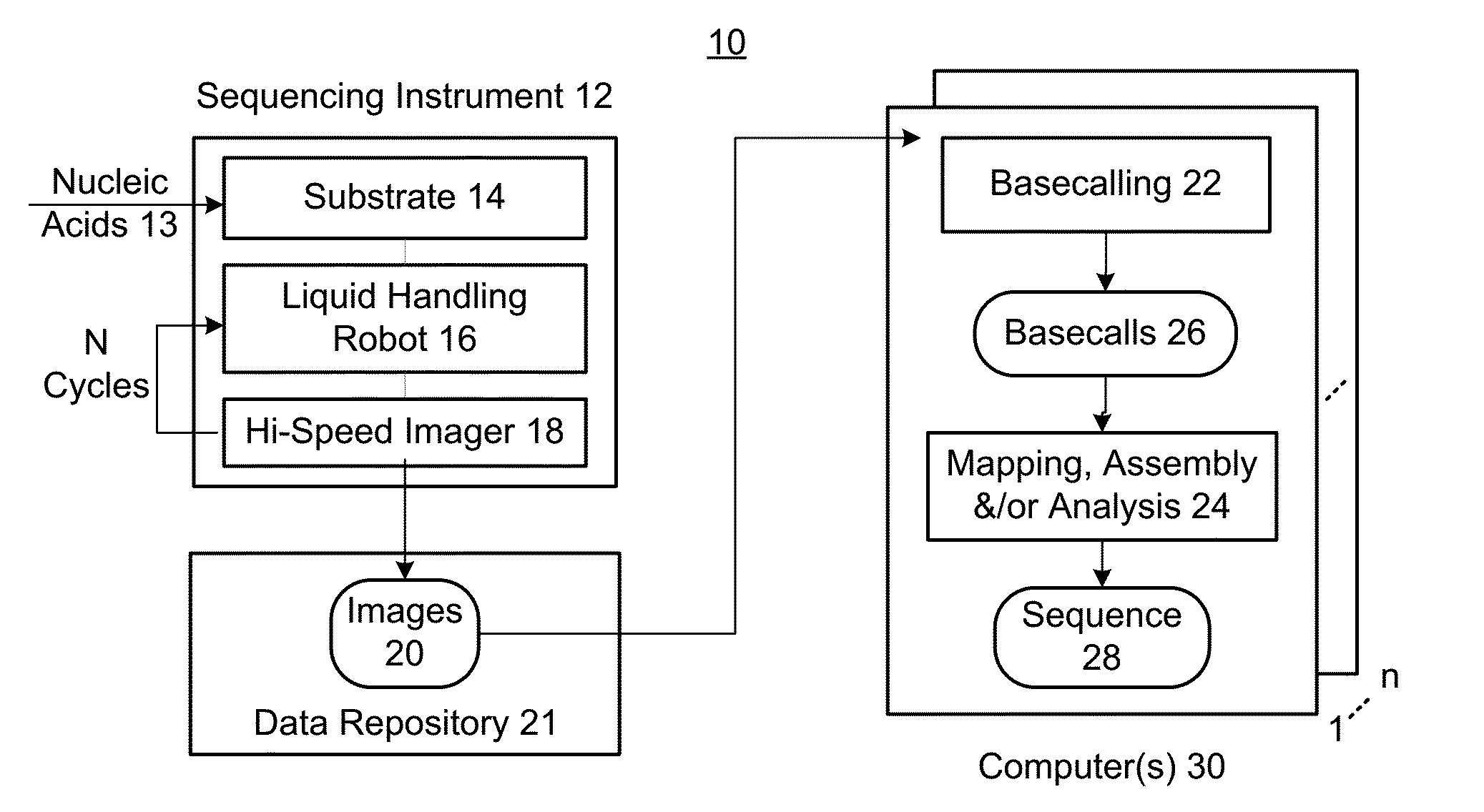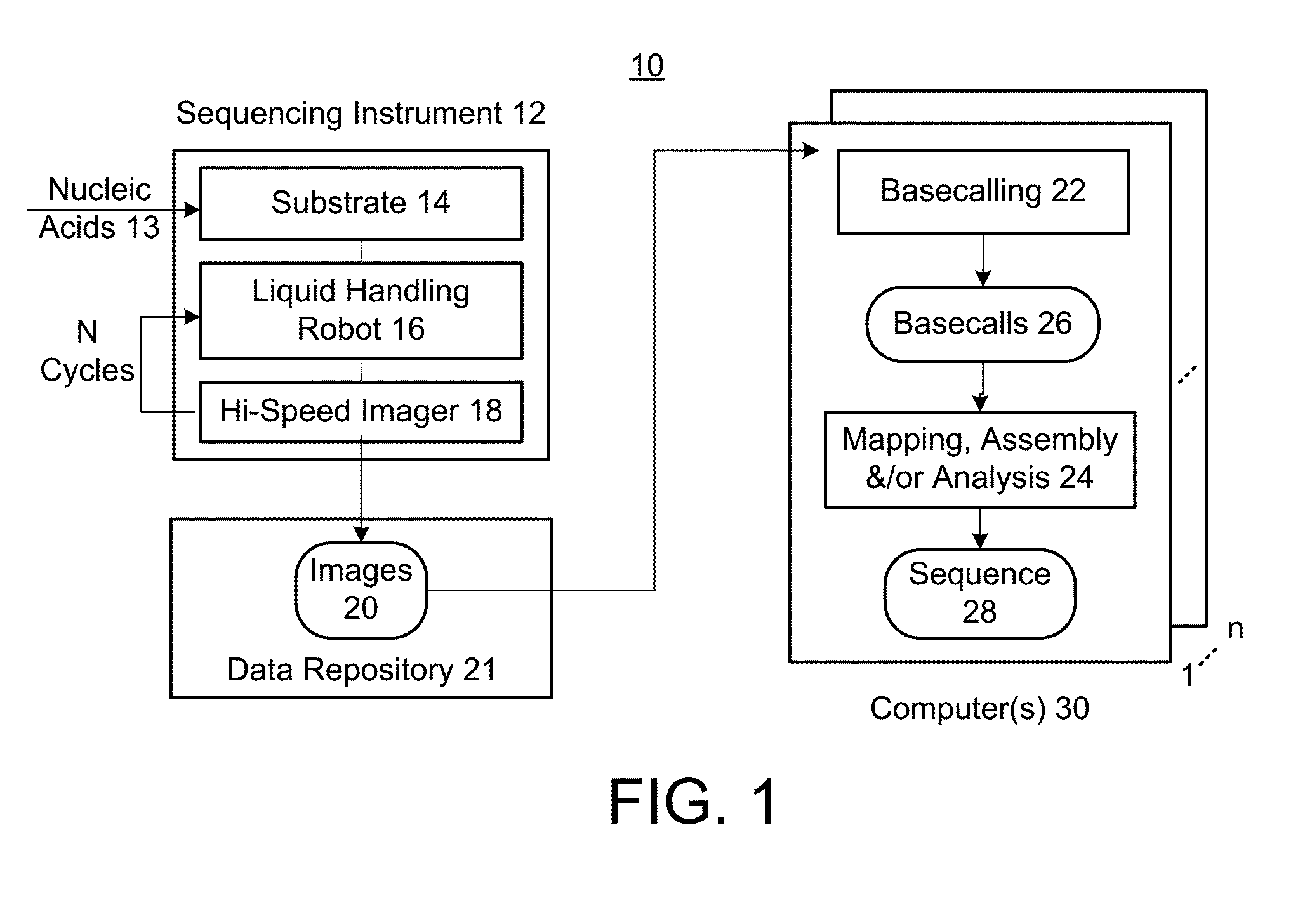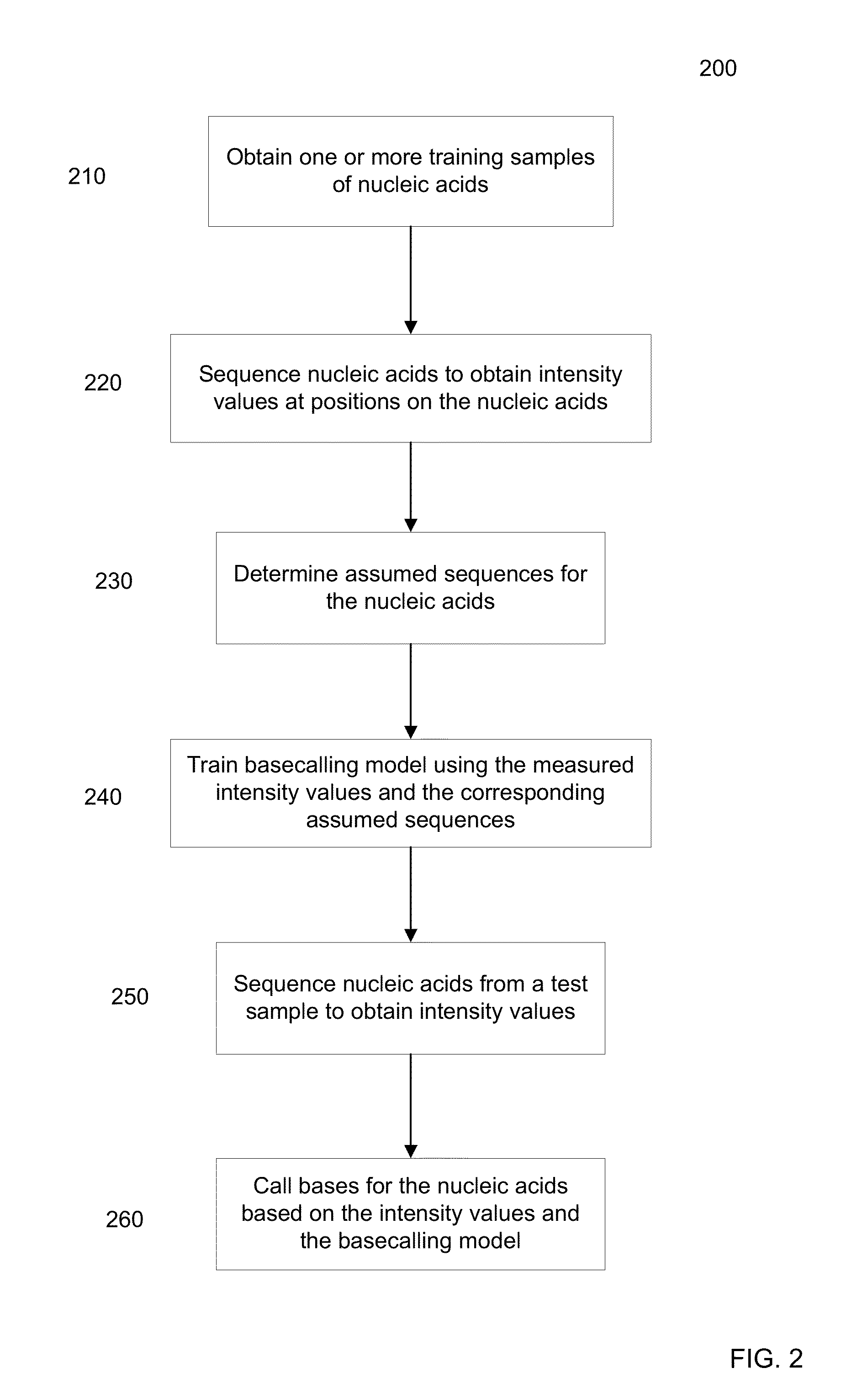Basecaller for DNA sequencing using machine learning
a technology of dna sequencing and basecaller, applied in the direction of instruments, material analysis, measurement devices, etc., can solve the problems of high error rate, signal variation, and inability to determine the intensity value, so as to reduce the contribution of the respective field
- Summary
- Abstract
- Description
- Claims
- Application Information
AI Technical Summary
Benefits of technology
Problems solved by technology
Method used
Image
Examples
Embodiment Construction
[0034]Embodiments can provide a machine-learning model for determining base calls from intensity values output from a sequencing process. The model can be created in various forms, e.g., as single-cycle or multi-cycle, using only the nucleic acid molecule of interest or also using the neighboring nucleic acid molecules, restricted to a particular region of the genome or applicable to the entire genome, etc.
[0035]Embodiments can be applied to any sequencing technique that outputs intensity values for two or more bases. The intensity values for a given sequencing cycle can be obtained simultaneously (e.g., multi-cycle) or sequentially (e.g., when each base is added and removed from the sample before adding a next base). Embodiments can be applied to sequencing techniques that amplify a nucleic acid template or single molecule techniques that do not amplify. Various amplification techniques can also be used. Sequencing by synthesis (SBS) or sequencing using ligation, as well as other t...
PUM
 Login to View More
Login to View More Abstract
Description
Claims
Application Information
 Login to View More
Login to View More - R&D
- Intellectual Property
- Life Sciences
- Materials
- Tech Scout
- Unparalleled Data Quality
- Higher Quality Content
- 60% Fewer Hallucinations
Browse by: Latest US Patents, China's latest patents, Technical Efficacy Thesaurus, Application Domain, Technology Topic, Popular Technical Reports.
© 2025 PatSnap. All rights reserved.Legal|Privacy policy|Modern Slavery Act Transparency Statement|Sitemap|About US| Contact US: help@patsnap.com



